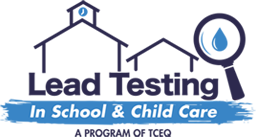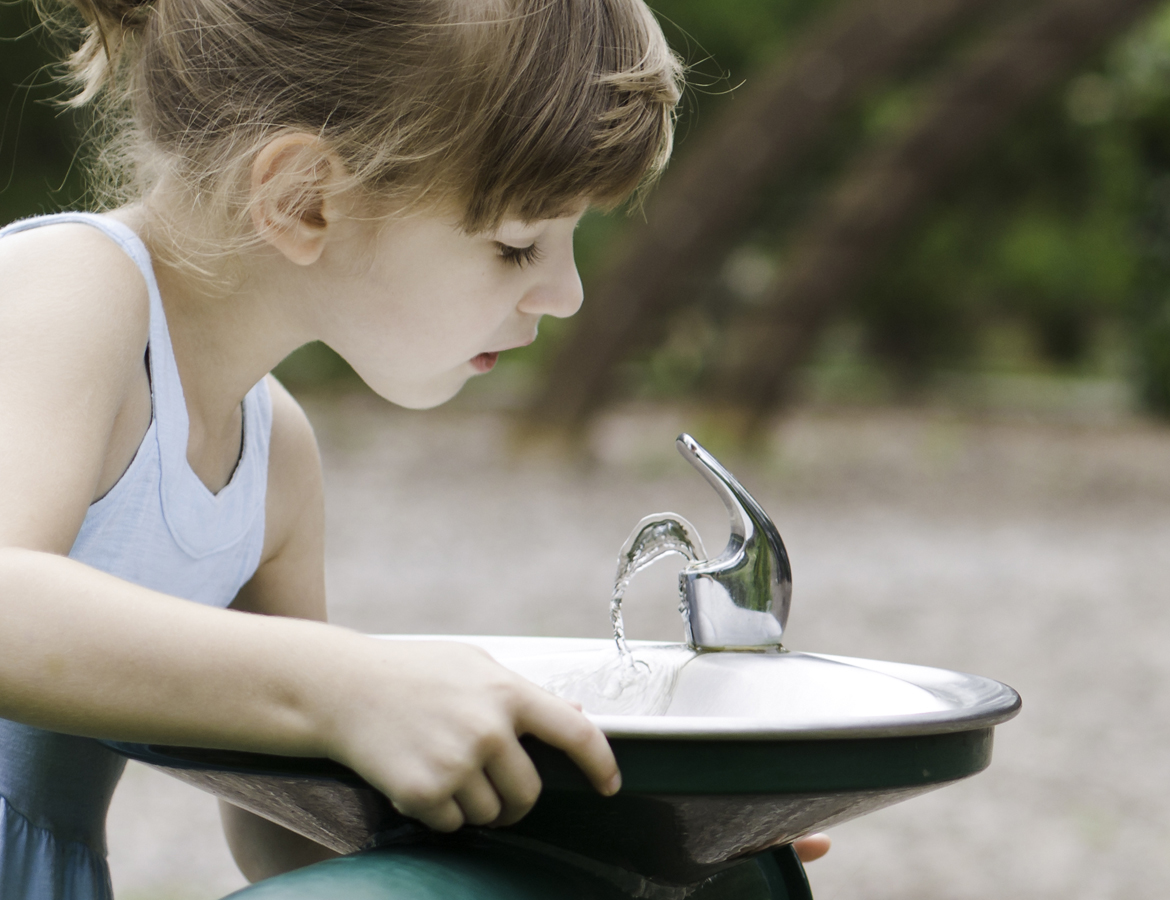Voluntary Lead Testing in School and Child Care Drinking Water
TCEQ is offering a free statewide program to help eligible participants conduct voluntary sampling and analysis for lead in drinking water at their schools and child care facilities.
Reducing Children's Exposure to Lead in Drinking Water
Sampling and laboratory testing are the only way to determine if lead is present in a school or child care facility's drinking water.
The free Lead Testing in School and Child Care Program trains participants to collect samples, tests their drinking water for lead, and helps them take action to reduce lead in drinking water.
NEWFacilities that complete sampling through the program and detect lead can be provided with free filters (pitcher, in-line, and faucet) that are certified to remove lead and lead free fixtures.
![]() Subscribe here to receive email updates on program activities.
Subscribe here to receive email updates on program activities.

Webinars
Check back for our next Lead Testing in School and Child Care Program Webinar!
View past webinars on the TCEQNews YouTube Channel.
Contact Us Today!
We are here to answer questions you have about enrolling or participating in the program.
Please contact us at: info@txleadtesting.org or (737) 276-1987
We can help you enroll one or multiple facilities. Please reach out to us if you have any questions. Enrollment Form (Spanish Version) |
Parents and community members can show their support by nominating a facility. Nominated facilities are contacted and encouraged to enroll in the program. |
| Access the public results portal where you can view and download sample results. |
Schedule a meeting with our team to learn more about participating in the program. |
About the Program

What does participation involve?
To help you successfully complete the program, you will receive:
- Education about the health effects and sources of lead.
- Guidance on how to communicate with your community about the program.
- Guidance on selecting testing sites.
- Training on how to collect samples and send them to a laboratory for testing.
- Recommendations on how to reduce exposure to lead.
Who is eligible?
All Texas public schools and regulated child care programs are eligible, but priority is given to:
- Schools and child care programs in low income or underserved areas (for example, schools where at least 50% of the children receive free and reduced lunch, and Head Start facilities).
- Schools and child care facilities mainly caring for children 6 years old and younger.
- Older facilities that are more likely to have pipes and fixtures containing lead.

- Complete trainings to learn about the sources and health effects of lead.
- Share program participation with your community.
- Create a sampling plan by identifying all drinking and cooking water outlets in your facility.
- Complete sample collector training.
- Receive a sampling kit, collect samples, and ship samples to a laboratory for testing.
- Take action to reduce lead in drinking water, as needed.
Having the following information will help you complete the enrollment form.
- Facility details: facility type (school or child care), the state-assigned identification number or operation number, facility name and address, and grade levels at the facility.
- Approximate number of students, faculty, and staff.
- Estimated construction dates of buildings.
- Approximate number of outlets used for drinking and food and beverage preparation.
- Who provides your drinking water (found on a copy of your facility’s monthly water bill).
- Number of children 6 years old or younger.
- Number of children receiving free and reduced lunch.
- Name and contact information for the individual that will oversee program activities.
You will need to identify who will fulfill the roles and responsibilities of the program. Determine who can:
- Be the coordinator and main contact for the program.
- Handle communication with your facility community.
- Create the sampling plan.
- Collect samples.
This information will help you collect samples that produce useful test results, that help locate potential sources of lead, and make accurate and affordable decisions on how to address a problem.
Examples of recommended actions include:
- Providing filters at problem outlets.
- Routine maintenance.
- Removing access to problem outlets by temporarily or permanently taking them out of service.
- Replacing problem outlets or reconfiguring/upgrading plumbing.
News and Information
News Bulletins
Subscribe here to receive email updates on program activities.
Program Flyer
Share the Lead Testing in School and Child Care Program Flyer with facilities in your community.
Participant Map
Public Water Systems, Lead Testing in Schools, and Child Care Facilities Viewer - This interactive viewer displays schools and child care facilities, and the public water systems that serve them. This viewer does not represent all schools and child care facilities in Texas.
External Resources
U.S. Environmental Protection Agency (EPA)
- 3Ts for Reducing Lead in Drinking Water: The EPA's 3Ts (Training, Testing, and Taking Action) provide recommendations and information for schools, child care facilities, and states, to implement a program to reduce lead levels in drinking water.
- WIIN Grant: Voluntary School and Child Care Lead Testing and Reduction Grant Program: Water Infrastructure Improvements for the Nation (WIIN) Act, Section 2107, provides funding to eligible participants to conduct voluntary testing in drinking water at schools and child care facilities.
- Memorandum of Understanding (MOU) on Reducing Lead Levels in Drinking Water in Schools and Child Care Facilities: The MOU is an agreement between federal and non-governmental partners to support activities that reduce lead levels in drinking water at school and child care facilities.
- Federal Action Plan to Reduce Childhood Lead Exposure: The action plan is a collaboration among federal agencies and stakeholders to improve children's health by reducing exposure to lead.
